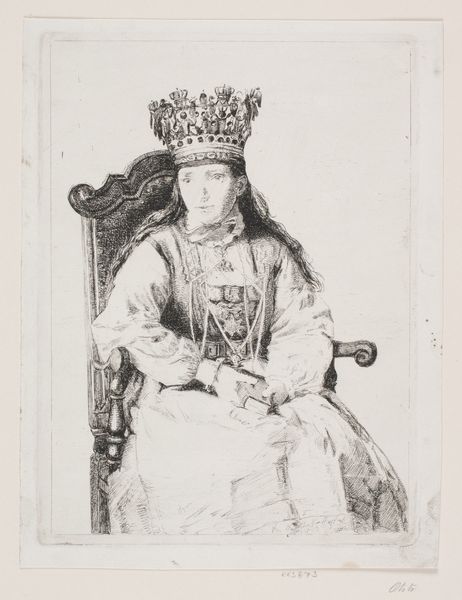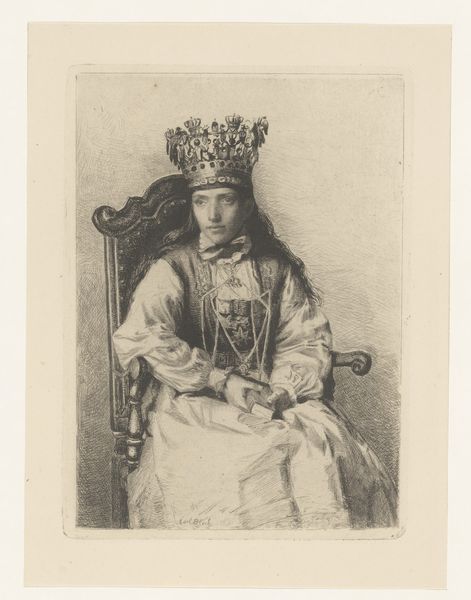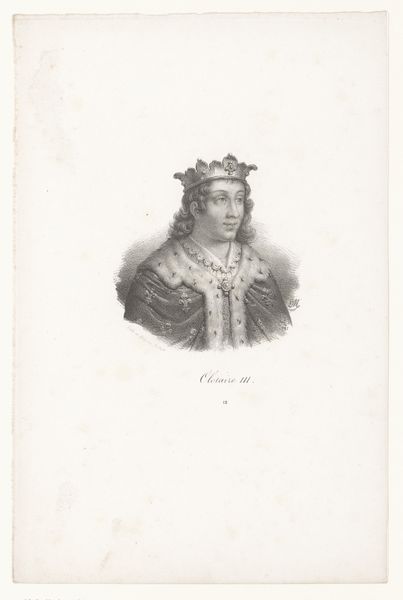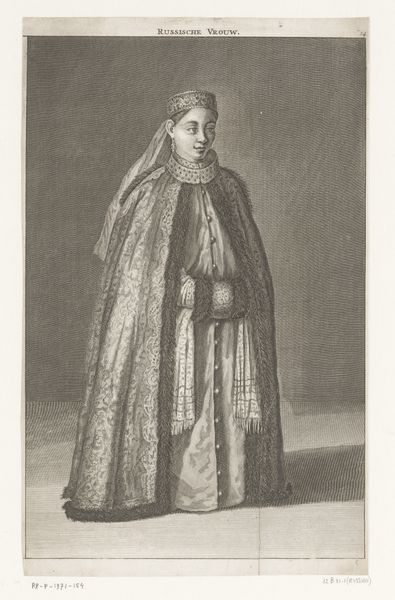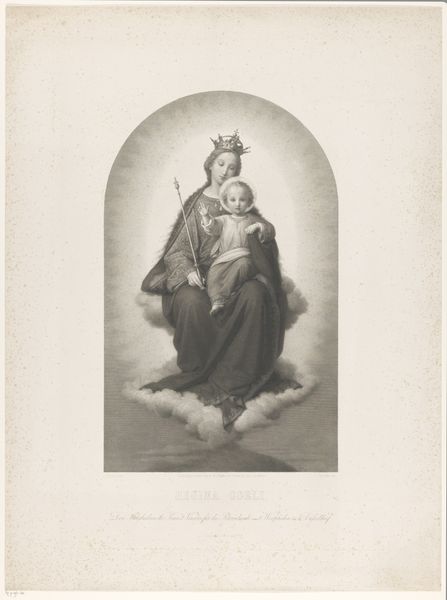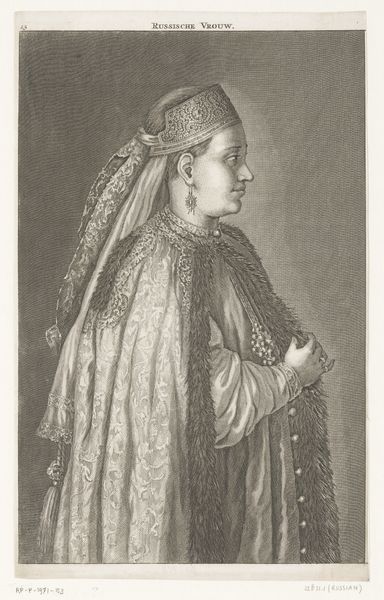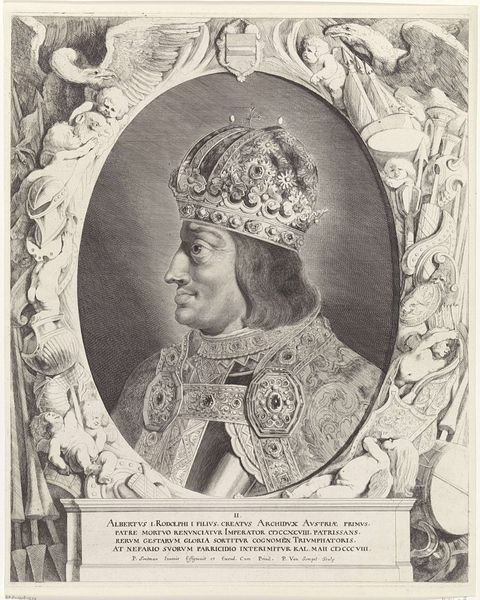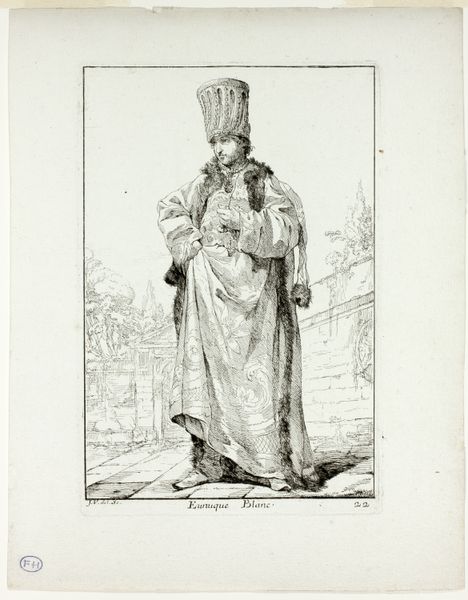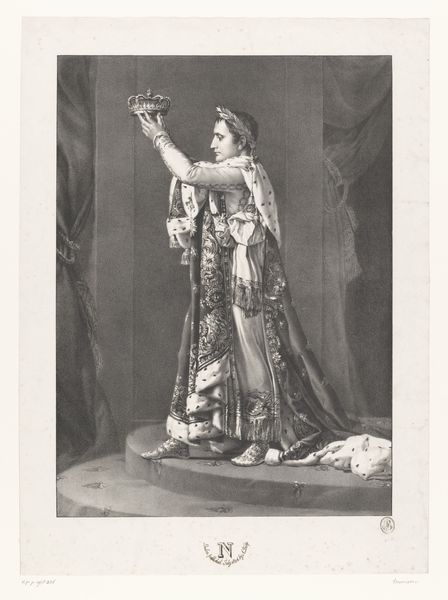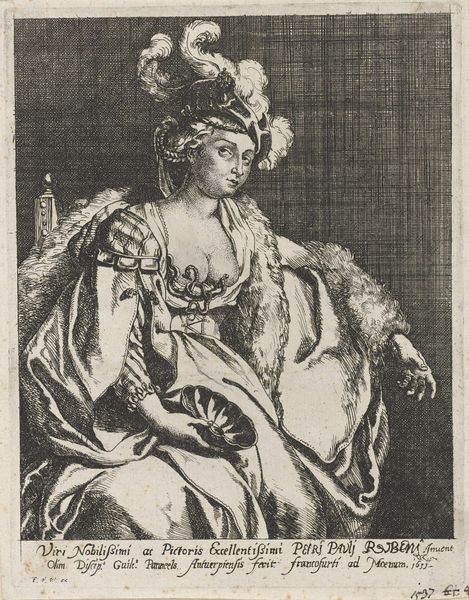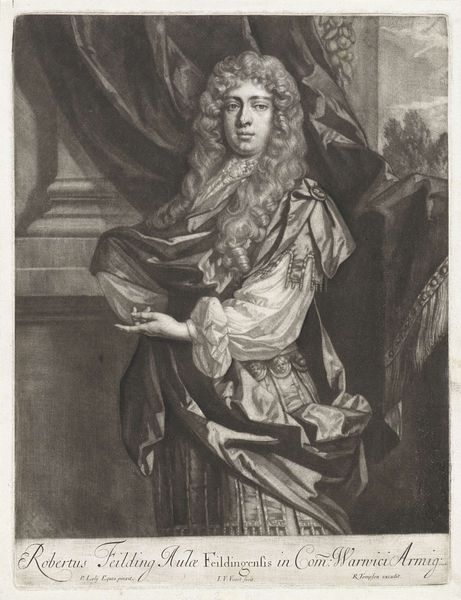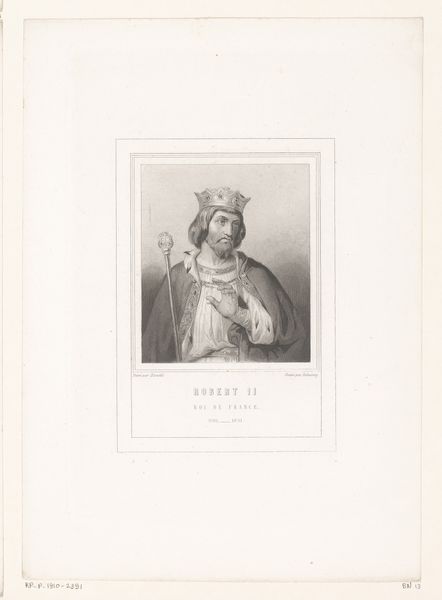
print, etching
#
portrait
# print
#
etching
#
genre-painting
#
realism
Dimensions: 225 mm (height) x 172 mm (width) (bladmaal), 210 mm (height) x 155 mm (width) (plademaal)
Curator: Before us, we have Carl Bloch's etching from 1883, "En norsk brud," or "A Norwegian Bride." Editor: The detail! It's immediately striking, especially the crown. Such intricate work rendered in etching – you can almost feel the weight of it. There is an almost stark quality, no frills just presentation. Curator: Absolutely, Bloch, a Dane, created this portrait. Its presence in the Statens Museum for Kunst, the National Gallery of Denmark, makes a statement. This work emphasizes the Nordic connections that Denmark has often promoted. Editor: This seems more ethnographic study, the kind that flourished then. Consider the intense focus on her attire, those heavy fabrics, that elaborate headgear; clearly not mass-produced, and that would place the value of craft front and centre. Curator: Well, this does tie in with broader trends. Bloch was deeply entrenched in the art world of the time. It coincided with burgeoning interest in folklore. Images of rural life helped forge national identity, reinforcing perceived historical roots of social cohesion. Editor: Yet the sitter doesn't project strength; there’s a melancholic quality in her eyes. If the aim were pure nationalistic imagery, wouldn't she seem more… celebratory? Are we seeing her burden and societal position here? Curator: An excellent point. Bloch perhaps wasn’t aiming simply for patriotic zeal, but rather tapped into that period's anxieties and yearnings. His style has a foot in realism, that genre aimed to record life in all its complexity and so includes elements of discomfort. It asks us to acknowledge our realities. Editor: What of the labour implied here? The ore in the crown alone... then consider the time and skills dedicated to rendering the textiles of this ceremonial costume! So much cultural production embodied in one image. That cannot be ignored. Curator: A crucial point to consider indeed. To fully understand it we need to remember the public function it played at the time it was created. Art then was seen as having educational and formative properties in nation building. It could both mirror society, and at the same time offer examples of that society to the general public. Editor: Yes! Understanding it requires going back and then bringing Bloch's craftsmanship in conversation with a later reassessment of its place, value, and politics. Thank you! Curator: Precisely! Looking at this "Norwegian Bride" again, my thoughts are drawn back to questions of social responsibility for art—it shapes more than beauty alone.
Comments
No comments
Be the first to comment and join the conversation on the ultimate creative platform.
